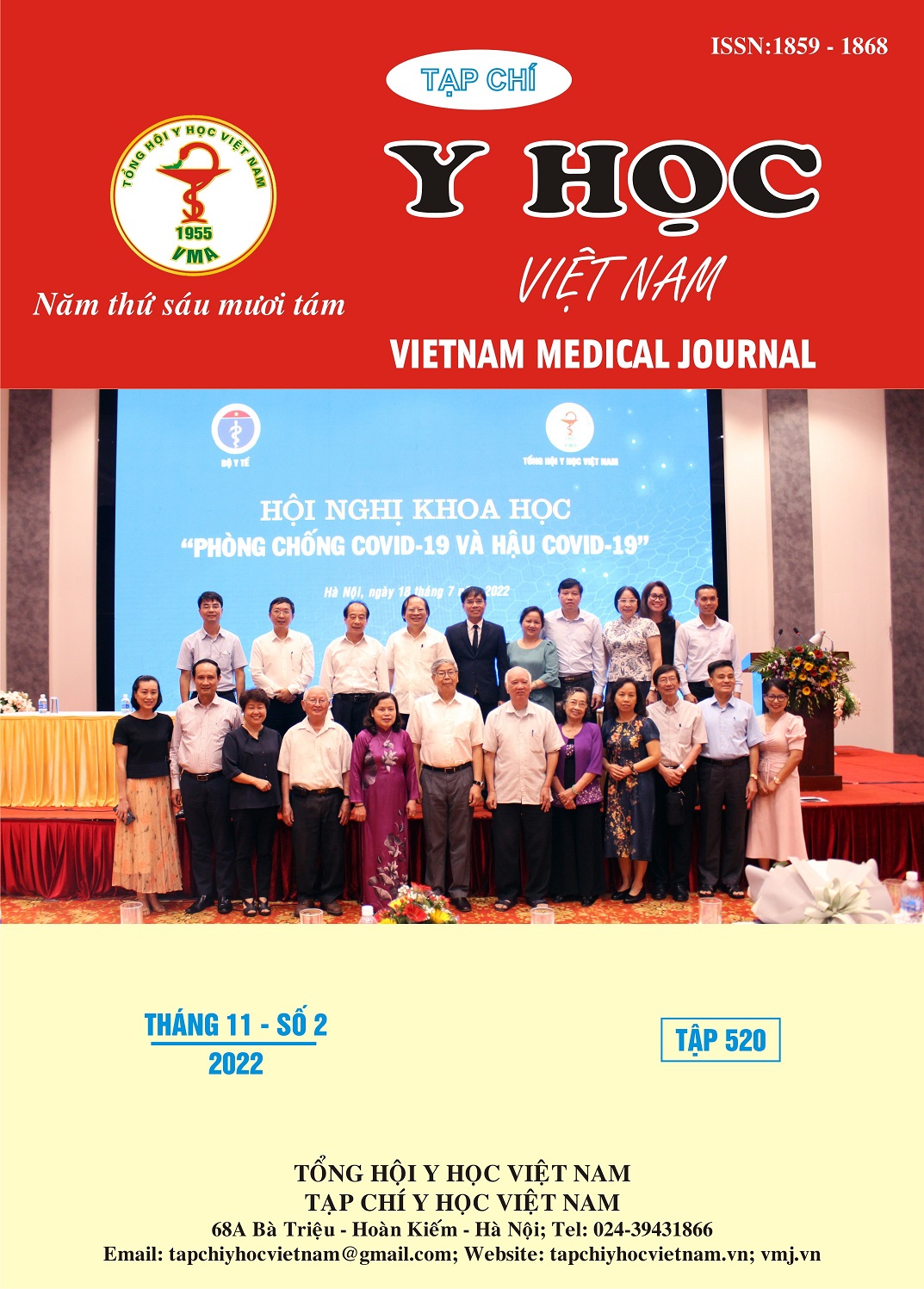SOME FACTORS RELATED TO THE CARE BURN OF FAMILYS WITH AUTISM SPECTRUM DISORDER TREATMENT AT THE NATIONAL CHILDREN HOSPITAL
Main Article Content
Abstract
Objective: To find out some factors related to the burden of caring for autistic children of families with children with autism disorder treated at the National Children's Hospital. Subjects and research methods: Research A cross-sectional description of over 200 parents with children with autism spectrum disorder treated at the National Children's Hospital from February 2021 to August 2022, using convenience sampling technique. Carer burden was assessed using the Zarit Burden Interview-22 standard tool by face-to-face interviews with parents. Children were diagnosed with autism spectrum disorder, determining factors related to the burden of care such as the child's medical condition, economic condition, level of medical care determined through interviews, data mining. medical record of treatment. Results: The mean burden score of the study group was 62.31 + 14.98. There are 122/200 61%) of patients at the very severe burden of care threshold. Patient age, duration of treatment, age of caregivers, and caregiver income are factors that are associated with burden of care severity. When analyzing multivariate regression, the results show that: duration of treatment, age of caregivers, caregiver's income and parents' marital status are independent factors related to family care burden. Families with children with autism spectrum disorder. Conclusion: duration of treatment, caregiver's age, caregiver's income and parents' marital status are factors that have been independently determined to be related to the care burden of families with children autism disorder.
Article Details
Keywords
Autism disorder (ASD); care burden; zarit interview score
References
2. Centers for Disease Control and Prevention (2018), Autism Spectrum Disorder (ASD) -Data&Statistics,CDC,accessed,01/06/2018,from https://www.cdc.gov/ncbddd/autism/data.html.
3. Nguyễn Thị Hương Giang (2012), Nghiên cứu phát hiện sớm tự kỷ bằng MCHAT23, đặc điểm dịch tễ-lâm sàng và can thiệp sớm phục hồi chức năng cho trẻ. Luận án Tiến sĩ Y học, Trường Đại học Y Hà Nội
4. Phạm Trung Kiên (2012), Nghiên cứu tỉ lệ hiện mắc và kết quả điều trị tự kỷ trẻ em tại tỉnh thái nguyên. Hội nghị Nhi khoa 2014.
5. Filipek, P. A., et al. (2000), "Practice parameter: screening and diagnosis of autism: report of the Quality Standards Subcommittee of the American Academy of Neurology and the Child Neurology Society", Neurology. 55(4), pp. 468-479.
6. Thành Ngọc Minh và cộng sự (2016), "Công tác khám, đánh giá trẻ mắc rối loạn phổ tự kỷ tại khoa Tâm thần - Bệnh viện Nhi Trung ương giai đoạn 2011- 2015", Tạp chí Khoa học và Giáo dục. Số đặc biệt, tháng 11-2016.
7. Andréa Regina Nunes Misquiatti (1), Maria Claudia Brito(2), Fernanda Terezinha Schmidtt Ferreira(3) (2013) family burden and children with autism spectrum disorders: perspective of caregivers
8. Nguyễn Bích Ngọc (2013), "Đánh giá gánh nặng của người chăm sóc cho bệnh nhân Alzheimer", Tạp chí Y học dự phòng, 5(151), 88-94.
9. Omaima Ezzat, Magda Bayoumi, Osama A Samarkandi (2017) “Quality of Life and Subjective Burden on Family Caregiver of Children with Autism”, American Journal of Nursing Science; 6(1): 33-39
10. Mugno D, Ruta L, D’Arrigo VG, Mazzone L (2007). Impairment of quality of life in parents of children and adolescents with pervasive developmental disorder. Health Qual Life Outcomes; 5: 22.


